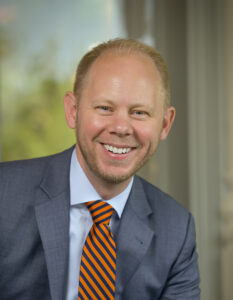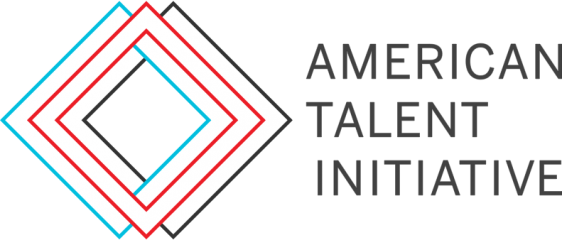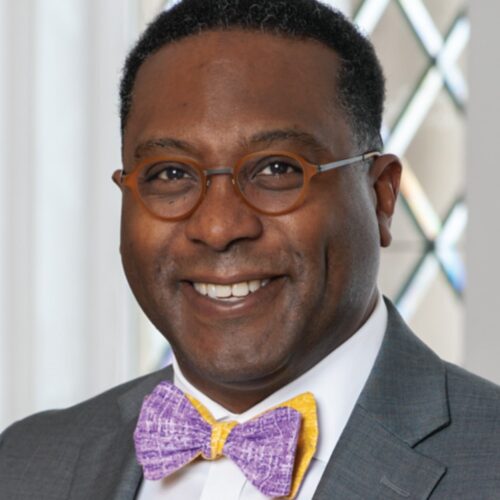Hope College President Matt Scogin: A “Pay-It-Forward” Model for Funding Higher Education
April 19, 2022
Reading Time: 5 minutes

In Summer 2021, Hope College unveiled Hope Forward, a new model aiming to fund full tuition for all students over their four-year experience. Students only need to pay room and board and would commit to sending gifts they can afford to Hope after they graduate. These gifts would fund future students’ tuition, allowing alumni to pay the benefits they receive forward. Hope will also structure comprehensive supports to ensure the success of an increasingly diverse student body and minimize equity-based retention and graduation gaps. ATI conducted an interview with Hope President Matt Scogin about this initiative for its Presidential Perspective series, editing it for length and clarity.
###
Q: Tell us about the Hope Forward initiative. What is it and what challenges does it address?
Let’s start with the premise that college should be the great equalizer. Research shows if students from different socioeconomic backgrounds attend the same college or university, they have remarkably similar opportunities for success after they graduate. In practice, however, higher ed can actually perpetuate inequality. Too often, students from different socioeconomic backgrounds cannot access the same colleges or universities. That stems, in part, from the current-day, broken higher education business model. We’re turning that on its head with Hope Forward, a new financial model based on a pay-it-forward aspiration for funding college. We fund students’ tuition up-front, asking in return that they give something to Hope every year after they graduate.
In addition to solving the problem of access and affordability, Hope Forward does other dramatic things:
- Providing our students access to a life of impact: By removing the burden of loans, we can better provide students with access to a life of impact after graduation. Every week, I'll talk to students in Hope's dining hall and ask: “What do you want to do after you graduate, with the emphasis on want?" What they want to do-- joining Doctors without Borders or Teach for America -- is often different from what they feel like they have to do because of the debt they face. Students purchase access to education through debt and this skews what they do after they graduate.
- Building a new financial model based on generosity: We can demonstrate an economy based on giving and gratitude can actually work. Hope is driven to develop an excellent educational experience for students, so they feel connected to Hope once they graduate and pay it forward. If we do our job well and position students for success, they are motivated to give more. Drawing on my background as an economist, I see this model gives us unique skin in the game because the onus is on us to deliver as exceptional an experience as possible for students. Our incentives end up neatly aligned.
- Solidifying an educational community: Because of the high price tag of tuition, our relationship with students too often feels transactional. With Hope Forward, students are signing up for a lifelong engagement with Hope College, not just a 4-year relationship. This creates compelling opportunities to support lifelong learning and encourages us to view students as students rather than customers paying for an experience.
Q: What went into developing the Hope Forward initiative? How will it advance your ATI goals?
Hope Forward really began with the presidential search process 3 years ago, when big questions around funding started to emerge in conversations with the [Hope] board of trustees. I think as a non-traditional president, with a background in financial and economic policy, the board wasn’t just amenable to having someone do non-traditional things. They actually held an expectation that we would pursue big and bold ideas.
Additionally, COVID hit just eight months after I started this job. Like every institution, we had to make dramatic pivots. In doing so, we demonstrated we could quickly implement changes and do so across the educational experience. That gave our community confidence that we could pursue this transformative change to our business model.
As Hope Forward is now underway, we see it as taking our membership in ATI to the next level and institutionalizing a commitment to accessibility and affordability. This model enables us to prioritize socioeconomic, geographic, and financial diversity, shaping a vibrant community of learners that I think reflects what ATI is trying to accomplish across the membership.
Q: What has the implementation of Hope Forward looked like to this point?
We’re piloting it this year with a cohort of 22 students and then aim to bring in another cohort of roughly 35 students next academic year. By starting small, we can assess outcomes and course correct in advance of rolling this out to all 3,000 students. We aspire to have the entire campus on the Hope Forward model in the next 10 years and the early indicators of this initial pilot are promising.
Q: Recognizing that the initiative requires significant growth in endowment and delayed financial return from students, what factors make you confident in its success?
We have encountered so much pent-up demand and enthusiasm for disrupting the broken business model surrounding higher education. Everyone knows change is needed, but few institutions are putting innovative practices in place to go after it. We also know people want to give to something that moves the needle. The Hope Forward model could work for a lot of schools, but someone has to be willing to try it first. Hope is a place of scholastic excellence competing with the best institutions in the world. We want to continue our academic excellence, but just fund it in a different way.
The transition from the current to the Hope Forward model is tricky. If you think of it in business terms, it’s like a crowdfunded model where alumni crowdfund our current students. To accelerate this transition, we need to raise significant money in our endowment. As students graduate and pay Hope Forward gifts, they will then fund incremental growth and inflationary increases. Implementing this model without the endowment would take several decades.
People tell me this is like offering free tuition to students, but it’s not. Higher education will always be expensive, so the question we should ask is: who should pay for it and when? Viewing students as customers is toxic and limits the possibilities of a healthy learning environment. I am convinced it’s easier to raise big money to support the success of a big initiative like Hope Forward than to raise a small amount of money for a less inspiring initiative.
Q: In tandem with Hope Forward, what other supports does Hope plan to implement to ensure more equitable retention and graduation rates among those students?
We know we need to invest even more in student support and retention efforts. We’re primarily serving the Rust Belt now, with 85% of students coming from 5 states in the Midwest. What we've done well is serve a high percentage of first-generation students (between high teens and low 20%) and begin to structure robust programming for them through initiatives like Spring Opportunity for Academic Recovery (SOAR), a First-Generation Student Union, and other programs. We believe Hope Forward will help increase our socioeconomic, geographic, and racial diversity. We’ll have some time to put the supports in place on this 10-year journey.
Q: As you implement Hope Forward in the coming years, what are the two to three messages you hope to impart to the field?
We believe something magical happens at residential liberal arts colleges where students, faculty, and staff can come together in a community of learners and co-create a vibrant and academically rigorous experience. We want to show the world that the approach to managing colleges like Hope can be done differently through a new financial aid model.
We’re not competitive about this vision either. There is more power in making this more of a movement, so we’d welcome it if institutional leaders want to bring this pay-it-forward approach to their campuses.




